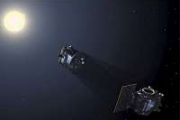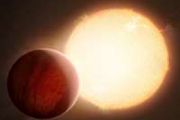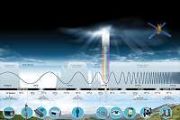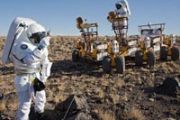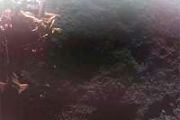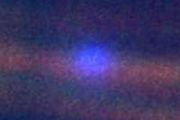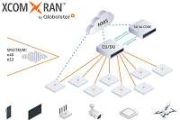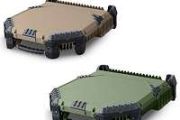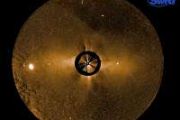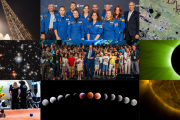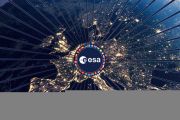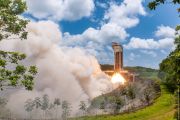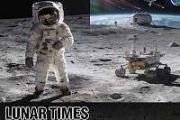
Copernical Team
Rocket Lab to twice in three Days, set to complete Kineis IoT constellation
 Rocket Lab USA, Inc. (Nasdaq: RKLB), a premier launch provider and space systems company, is set to achieve a new milestone with two Electron launches scheduled just three days apart from its private launch facility in New Zealand, marking a first for the company.
The upcoming Electron mission for iQPS is planned for no earlier than March 15th NZDT. This will be swiftly followed by another
Rocket Lab USA, Inc. (Nasdaq: RKLB), a premier launch provider and space systems company, is set to achieve a new milestone with two Electron launches scheduled just three days apart from its private launch facility in New Zealand, marking a first for the company.
The upcoming Electron mission for iQPS is planned for no earlier than March 15th NZDT. This will be swiftly followed by another Rocket Lab Plans to Acquire Mynaric to Strengthen Space Communications Portfolio
 Rocket Lab USA, Inc. (Nasdaq: RKLB), a leading provider of launch services and space systems, has announced its intention to acquire a controlling equity stake in Mynaric AG, a prominent developer of laser optical communications terminals. The proposed acquisition is contingent upon receiving necessary governmental approvals and the successful completion of Mynaric's ongoing StaRUG restructuring
Rocket Lab USA, Inc. (Nasdaq: RKLB), a leading provider of launch services and space systems, has announced its intention to acquire a controlling equity stake in Mynaric AG, a prominent developer of laser optical communications terminals. The proposed acquisition is contingent upon receiving necessary governmental approvals and the successful completion of Mynaric's ongoing StaRUG restructuring Quantum Space Introduces Life Extension Services for Satellite Operators
 Quantum Space, a pioneer in advanced space operations, has unveiled a new suite of life extension services designed to enhance satellite mission longevity and operational flexibility. Utilizing its agile Ranger spacecraft, the company aims to provide mission extension, orbital repositioning, and refueling solutions to meet the increasing demand for sustainable and cost-effective satellite manage
Quantum Space, a pioneer in advanced space operations, has unveiled a new suite of life extension services designed to enhance satellite mission longevity and operational flexibility. Utilizing its agile Ranger spacecraft, the company aims to provide mission extension, orbital repositioning, and refueling solutions to meet the increasing demand for sustainable and cost-effective satellite manage Signs of alien life may be hiding in these gases
 Scientists have identified a promising new way to detect life on faraway planets, hinging on worlds that look nothing like Earth and gases rarely considered in the search for extraterrestrials.
In a new Astrophysical Journal Letters paper, researchers from the University of California, Riverside, describe these gases, which could be detected in the atmospheres of exoplanets - planets outsi
Scientists have identified a promising new way to detect life on faraway planets, hinging on worlds that look nothing like Earth and gases rarely considered in the search for extraterrestrials.
In a new Astrophysical Journal Letters paper, researchers from the University of California, Riverside, describe these gases, which could be detected in the atmospheres of exoplanets - planets outsi Planetary system discovered around Barnard's Star
 For over a century, astronomers have been intrigued by Barnard's Star, the closest single-star system to Earth, in their quest to identify planetary bodies orbiting it. Initially observed in 1916 by E. E. Barnard at Yerkes Observatory, this red dwarf has long been a target for exoplanet research. Red dwarfs are known for their propensity to host compact planetary systems, often composed of multi
For over a century, astronomers have been intrigued by Barnard's Star, the closest single-star system to Earth, in their quest to identify planetary bodies orbiting it. Initially observed in 1916 by E. E. Barnard at Yerkes Observatory, this red dwarf has long been a target for exoplanet research. Red dwarfs are known for their propensity to host compact planetary systems, often composed of multi NASA Works to Regain Contact with Lunar Trailblazer and Evaluate Future Possibilities
 NASA's mission team is continuing efforts to restore communication with the Lunar Trailblazer spacecraft after losing contact on February 27, just a day after its launch. The mission operators at Caltech's IPAC are working alongside NASA's Deep Space Network to send commands in an attempt to establish a connection.
Several radio ground stations have also volunteered their resources to dete
NASA's mission team is continuing efforts to restore communication with the Lunar Trailblazer spacecraft after losing contact on February 27, just a day after its launch. The mission operators at Caltech's IPAC are working alongside NASA's Deep Space Network to send commands in an attempt to establish a connection.
Several radio ground stations have also volunteered their resources to dete Airbus Selects Rocket Lab to Supply Solar Panels for Next-Gen OneWeb Satellites
 Rocket Lab USA, Inc. (Nasdaq: RKLB), a leading provider of space systems and launch services, has been awarded a contract by Airbus Constellation Satellites to supply high-efficiency solar panels for 100 OneWeb Low Earth Orbit (LEO) satellites commissioned by Eutelsat Group. These satellites are designed to extend high-speed, low-latency internet connectivity to underserved regions worldwide.
Rocket Lab USA, Inc. (Nasdaq: RKLB), a leading provider of space systems and launch services, has been awarded a contract by Airbus Constellation Satellites to supply high-efficiency solar panels for 100 OneWeb Low Earth Orbit (LEO) satellites commissioned by Eutelsat Group. These satellites are designed to extend high-speed, low-latency internet connectivity to underserved regions worldwide. China's first commercial spaceport launches 18 satellites
 China's first commercial spaceport successfully launched 18 satellites into orbit early Wednesday, utilizing a Long March 8 carrier rocket from the Hainan International Commercial Aerospace Launch Center in Wenchang, Hainan province.
According to China Aerospace Science and Technology Corporation (CASC), the state-owned enterprise overseeing the mission, the rocket lifted off at 12:38 a.m.
China's first commercial spaceport successfully launched 18 satellites into orbit early Wednesday, utilizing a Long March 8 carrier rocket from the Hainan International Commercial Aerospace Launch Center in Wenchang, Hainan province.
According to China Aerospace Science and Technology Corporation (CASC), the state-owned enterprise overseeing the mission, the rocket lifted off at 12:38 a.m. NASA's PUNCH Mission Commences Study of Solar Wind
 NASA's Polarimeter to Unify the Corona and Heliosphere (PUNCH) mission has successfully established full contact with its four small satellites, confirming they are operational and fully powered.
Over its planned two-year duration, PUNCH will conduct extensive 3D imaging of the Sun's corona, or outermost atmosphere, and its transformation into the solar wind.
The solar wind, along wi
NASA's Polarimeter to Unify the Corona and Heliosphere (PUNCH) mission has successfully established full contact with its four small satellites, confirming they are operational and fully powered.
Over its planned two-year duration, PUNCH will conduct extensive 3D imaging of the Sun's corona, or outermost atmosphere, and its transformation into the solar wind.
The solar wind, along wi Signal Acquired NASA SPHEREx Begins Science Mission
 NASA's SPHEREx (Spectro-Photometer for the History of the Universe, Epoch of Reionization and Ices Explorer) mission has successfully established communication with ground controllers, confirming that the spacecraft is fully operational and generating power as expected.
In the coming weeks, mission specialists will ready the observatory for its scientific survey by performing instrument ca
NASA's SPHEREx (Spectro-Photometer for the History of the Universe, Epoch of Reionization and Ices Explorer) mission has successfully established communication with ground controllers, confirming that the spacecraft is fully operational and generating power as expected.
In the coming weeks, mission specialists will ready the observatory for its scientific survey by performing instrument ca 







